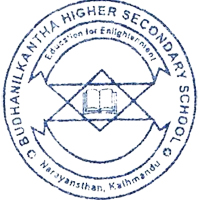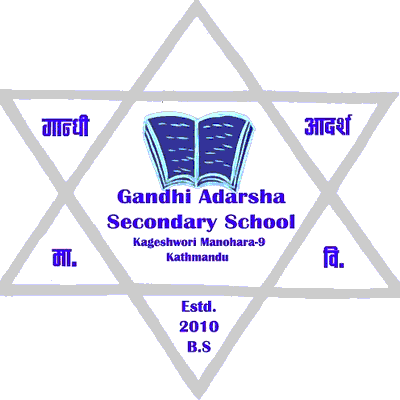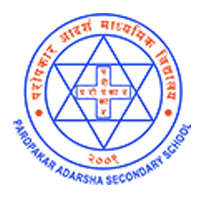Overview
Bijeshwori Gyan Mandir Sainik Mahavidyalaya (BGMSMV) is a girls’ institution in Bijeshwori-15, Kathmandu, set up under the Nepal Army Welfare Fund (NAWF) with support from the Nepali Army Wives’ Association (NAWA). Established on Kartik 23, 2054 B.S. (November 9, 1997 A.D.) at the foothill of Swayambhu, the campus runs Classes 1–12 with NEB Ten Plus Two (+2) in Science and Management.
BGMSMV, girls’ school in Kathmandu, Nepal Army Welfare Fund, NAWA, NEB +2 Science and Management, admission, Army Quota, Civil Quota, facilities, scholarships, counseling, laboratories, and library.
The institution serves daughters of Army personnel and civilians in a 60:40 ratio and maintains a clear student-support system that includes individual counseling, health and hygiene programs, structured evaluation, and a balanced focus on academics and co-curricular growth.
BGMSMV was founded to expand access to quality schooling for girls, particularly daughters of Army personnel, while remaining open to the wider community. The institution operates under NAWF with oversight and patronage from NAWA, ensuring financial stewardship, safety, and continuity.
The school offers a multi-faceted curriculum from Grade 1 to Grade 12 aligned with national standards. Over time, graduates have proceeded to higher studies in MBBS, Nursing, Engineering, ICT, and other fields, while many have joined uniformed and civil services. The school’s approach pairs classroom learning with disciplined campus culture, structured guidance, and meaningful exposure to arts, sports, and community engagement.
Quick Highlights
-
Location: Bijeshwori-15, Kathmandu (near Swayambhu)
-
Establishment: Kartik 23, 2054 B.S. (1997 A.D.)
-
Governing Body: Nepal Army Welfare Fund (NAWF), under the patronage of NAWA
-
School Type: Girls’ school with classes 1–12
-
+2 Programs: NEB Science and Management
-
Student Composition: Army personnel daughters and civilians in a 60:40 ratio
-
Admissions: Class 1 (Army quota), Class 3 (Civil quota), +2 (both quotas)
-
Evaluation: Continuous and Comprehensive Evaluation (CCE) with project work, practicals, and behavior tracking
-
Support Systems: Counseling, health check-ups, immunization, hygiene rules, PT in assembly
-
Campus Culture: House system (Sunakhari, Laligurans, Parijat, Sayapatri); prefect and captain structure
-
Facilities: Science labs, computer lab with internet, library, auditorium (~500 seats), resource room, transport, sports courts, Taekwondo hall
-
Community Linkages: Social visits (e.g., Maiti Nepal, ABC Nepal, AATWIN), orphanage outreach

Mission, Vision, Objective
Mission
Provide accessible, value-based, and academically sound schooling for girls, primarily children of Army personnel, while serving the broader public, with careful attention to character, discipline, health, and future pathways.
Vision
A learning space where girls develop confidence, civic responsibility, and real-life skills, enabling them to succeed in higher education and service to society.
Core Objectives
-
Access & Inclusion: Extend quality education to daughters of Army families and civilians across Nepal at reasonable fees.
-
Academic Strength: Offer a well-structured curriculum that builds scientific thinking, quantitative reasoning, language proficiency, and digital literacy.
-
Character & Ethics: Promote self-reliance, punctuality, discipline, teamwork, and service to community.
-
Practical Exposure: Encourage arts, music, dance, sports, and club activities to uncover personal strengths.
-
Career Readiness: Provide counseling linked to study choices, entrance preparation basics, and early awareness of national and global opportunities.
Academic Programs Offered
School Level (Classes 1–10)
The school follows the Government of Nepal curriculum. Teaching in the primary and lower-secondary years integrates language, mathematics, science, social studies, arts, and physical education with age-appropriate projects and activities. Practical components in arts and crafts, music, dance, and basic digital skills help students build confidence from early grades.
Ten Plus Two (+2) — National Examinations Board (NEB)
+2 Science
Aim: Build scientific temperament, analytical thinking, and readiness for higher studies in medicine, engineering, ICT, biotechnology, and allied areas.
Subject Structure
-
Compulsory: Nepali, English, Mathematics
-
Optional Group: Physics; Chemistry; Biology or Computer Science
Learning Approach
-
Theory integrated with practical work in Physics, Chemistry, Biology, and Computer Science labs.
-
Assignments, presentations, and project work to develop inquiry and communication skills.
-
Guidance on exam patterns and fundamentals for entrance preparation.
+2 Management
Aim: Develop conceptual clarity and application-oriented understanding of business, accounts, economics, and entrepreneurship.
Learning Approach
-
Classroom learning supported by presentations, case-style tasks, and small research assignments.
-
Skill-building through workshops and structured activities in communication, computing, and basic data handling.
-
Orientation on career paths in business, banking, hospitality, ICT-enabled services, and public administration.
For current subject combinations, elective options, and seat availability, students should confirm directly with the administration during the admission cycle.
Admission Process
Entry Points and Quotas
-
Class 1: Army Quota (primary intake)
-
Class 3: Civil Quota intake
-
+2 (Grade 11): Science and Management open to both quotas
Selection Method
-
Written assessment followed by interview.
-
Merit-based selection aligned with institutional rules for quota categories.
Documents Required
Army Quota (School / +2 as applicable)
-
Birth Registration Certificate (Ward Office)
-
Academic transcript / Grade Sheet (SEE for +2; SKG/UKG for Class 1 as applicable)
-
Character Certificate from previous school
-
Recent passport-size photos
-
Letter of recommendation verified by the unit for children of in-service Army personnel
-
Copy of Pension Patta for children of retired Army personnel
Civil Quota (School / +2 as applicable)
-
Birth Registration Certificate (Ward Office)
-
Academic transcript / Grade Sheet (SEE for +2; SKG/UKG for Class 1 as applicable)
-
Character Certificate from previous school
-
Recent passport-size photos
Schedule & Procedure
-
School entrance tests are typically held in the first week of Chaitra (for early grades).
-
+2 admission dates follow the NEB calendar and institutional notices.
-
All applicants should follow published notices for forms, fee structures, and interview timings.
Teaching Faculty and Learning Methodology
Faculty Profile
BGMSMV hosts experienced teachers with relevant academic qualifications. Faculty use presentations, audio-visual aids, and guided discussions. Regular training keeps classroom practice current with national curriculum expectations.
Classroom and Assessment Practices
-
Student-centered activities that encourage participation and clarify core concepts.
-
Workshops, group tasks, and seminar-style sessions in upper grades to build confidence.
-
Continuous and Comprehensive Evaluation (CCE):
-
Ongoing assessment through classwork, practicals, projects, and behavior observation.
-
Cumulative grading across terms supports fair tracking of progress.
-
Diagnostic feedback helps address learning gaps inside the school year.
-
Counseling and Guidance
-
Academic counseling linked to subject choices and examination planning.
-
Personal and career guidance for adolescents, focusing on emotional well-being, healthy habits, and informed decision-making.
-
Regular parent interactions ensure alignment between home and school.
Infrastructure and Learning Facilities
-
Classrooms: Spacious, well-ventilated rooms with age-appropriate seating.
-
Auditorium: Approx. 500-seat hall with sound system for events, exams, and presentations.
-
Science Laboratories: Separate labs for Physics, Chemistry, Biology with required apparatus and specimens.
-
Computer Lab: Networked computers with internet access for assignments and basic research tasks.
-
Library: Issue and reference sections with textbooks, reference titles, and reading cubicles; reading log and book review practice encouraged.
-
Resource Room: Thematic displays on culture, science, technology, arts, and social themes; envisioned as a living learning space built through staff contributions.
-
Transport: Bus services along pre-announced routes at reasonable cost.
-
Sports Facilities: Standard basketball and volleyball courts, indoor games (TT, chess, badminton), and a well-known Taekwondo hall.
-
Health & Safety: First-aid beds, terminal health check-ups, immunization drives, and PT during assembly.
Student Life and Campus Experience
Discipline and Leadership
-
Prefect system: School and college prefects support discipline and peer guidance.
-
Class leadership: Each section has a captain and vice-captain.
-
House system: Sunakhari, Laligurans, Parijat, Sayapatri promote teamwork and healthy competition.
-
Dress code: Clean, well-ironed uniform; informal wear is not allowed.
Health, Hygiene, and Nutrition
-
No junk food policy on campus.
-
Awareness sessions on adolescence and hygiene.
-
Guidance on physical fitness and mental alertness through the daily routine.
Community and Social Awareness
-
Visits to Maiti Nepal, ABC Nepal, AATWIN, and nearby orphanages build empathy and social responsibility.
-
Student involvement in charity and outreach during selected events.
Extracurricular Activities (ECA)
-
Sports: Taekwondo (with national-level visibility), Athletics, Volleyball, Basketball, Futsal; intra- and inter-house meets; a spirit of fair play and persistence.
-
Indoor Games: Table tennis, chess, badminton.
-
Literary & Cultural: Quiz, essay, poetry, music and dance events, cultural showcases.
-
Clubs & Events: Activity calendars encourage leadership, public speaking, and event organization.
ECA outcomes are recognized through certificates and medals, and regular showcases help students track personal growth beyond academics.
Scholarships and Financial Support
The school maintains affordable fee targets in line with its founding purpose. Army families receive priority through the quota system.
Need-based concessions and merit considerations, where available, follow published rules during admission.
Interested families should consult the administration office for the current cycle’s provisions, documentation, and deadlines.
Achievements and Institutional Milestones
-
Academic outcomes: Consistent performance in Grade X and Grade XII board examinations, including recent years such as 2080 B.S.
-
Graduate pathways: Alumni pursuing MBBS, Nursing, Engineering, ICT, public service, and defense service tracks.
-
Awards & recognition: Medals and certificates from inter-school sports, quiz, essay, and poetry events.
-
Program growth: Expansion from primary to +2 Science and Management with ongoing strengthening of labs, library, and resource rooms.
Why Choose This Institution?
-
Girls’ education with purpose: Clear emphasis on dignity, discipline, and service.
-
Governance and trust: Operated by Nepal Army Welfare Fund under NAWA patronage.
-
Balanced schooling: Academic depth supported by CCE, counseling, arts, and sports.
-
Safe, structured environment: Prefect and house systems build leadership from early grades.
-
Practical exposure: Labs, presentations, and events develop confidence and communication.
-
Community linkages: Social visits and outreach help students understand real-life issues.
-
Pathways after Grade 12: Guidance for higher study choices and entrance basics.
-
Transport and access: Bus routes aid regular attendance and punctuality.
Teaching Methodology in Detail
Academic Planning
Annual and term calendars align with MOE/NEB timelines. Teachers create unit-wise plans with lesson objectives, practice sets, and periodic checks. Class routines balance lectures with activities, demonstrations, and problem-solving.
Practical & Project Work
-
Science: Lab experiments and write-ups build observation and reporting skills.
-
Management: Small research tasks, presentations, and data interpretation exercises.
-
Languages: Reading circles, book reviews, and writing tasks improve fluency.
Evaluation & Feedback
-
Formative checks during lessons to catch misconceptions.
-
Summative tests at term ends, with report cards and parent interactions.
-
Behavior and participation carry weight to encourage positive conduct.
Parent–School Partnership
-
Term-wise parent meetings to share progress, plans, and concerns.
-
Open channels for parents to meet class teachers or the counseling unit when required.
-
Individual student profiles help track growth across academics and activities.
Planning and Implementation (Girl-Centric Focus)
The school’s long-term plan prioritizes girls who may face barriers due to geography, family circumstances, or social norms. Programs aim to:
-
Support self-confidence through leadership roles, clubs, and peer mentorship.
-
Encourage STEM interest among girls in the +2 Science track.
-
Introduce financial literacy and communication skills in relevant grades.
-
Maintain safe spaces for discussion on adolescence, health, and personal safety.
-
Channel ECA and CCA to identify and grow individual strengths.
Pastoral Care and Student Support
-
Hygiene & discipline: Clear campus rules, daily PT, and timely reminders.
-
Health services: Terminal check-ups, immunization, and basic first aid on site.
-
Counseling: A guidance and counseling section assists with learning challenges and emotional concerns, working with feedback from students, teachers, and parents.
-
Bridge with families: Regular reporting reduces gaps between home and school expectations.
Facilities (Detailed)
-
Auditorium: Conducts orientations, ceremonies, exams, and competitions.
-
Resource Room: Cultural, scientific, and social displays; aims to evolve into a mini-museum for hands-on learning.
-
Library: Reference and issue sections; reading culture strengthened through reviews and annual recognition for frequent readers.
-
Computer Lab: Practical sessions for basic programming, productivity tools, and internet research with teacher oversight.
-
Science Labs: Emphasis on lab discipline, safety, proper apparatus handling, and accurate record-keeping.
-
Transport: Routes published each session; safety protocols followed at stops.
-
Sports: Regular practice schedules; participation in inter-house and inter-school meets; Taekwondo hall is a campus highlight.
School Culture and Values
-
Discipline and punctuality are part of the everyday routine.
-
Respect and cooperation guide student–student and student–teacher interactions.
-
Teamwork is advanced through houses and group tasks.
-
Dress code supports neatness and a learning-first mindset.
-
Civic sense grows through social outreach and environmental awareness.
Admission Guidelines at a Glance
-
School Level:
-
Class 1 intake: Army quota; Class 3 intake: Civil quota.
-
Entrance test: Held around early Chaitra; interview follows.
-
Documents: Birth certificate, previous school records, character certificate, photos, and Army service documents where relevant.
-
-
+2 Level (Science/Management):
-
Eligibility: SEE graduates meeting program requirements.
-
Selection: Entrance assessment, interview, and documentation as listed earlier for quotas.
-
Orientation: Program briefings explain subject options and lab/library use.
-
Prospective families should refer to official notices each year for exact dates and fee details.
Community Engagement and Social Responsibility
The school arranges visits to social organizations and periodic donation drives for orphanages and shelters. Students learn about gender equity, social justice, and civic duties through talks and guided activities. This exposure builds empathy and strengthens the link between classroom ideas and everyday life.
Leadership Messages
School leadership highlights three anchors of progress: discipline, determination, and teamwork. Guidance from NAWF and NAWA, steady support from parents, and the sustained effort of teachers and students together shape a learning culture that values hard work and integrity.
Conclusion
BGMSMV stands as a dedicated girls’ institution in Kathmandu with a stable governance structure, Classes 1–12, and NEB +2 Science and Management. The school balances academics, sports, arts, and counseling while keeping clear rules for safety and discipline. Families seeking a structured learning environment, reliable evaluation and feedback, and supportive pathways to higher studies will find BGMSMV a practical choice.
For admission dates, quota details, and current subject combinations, please contact the administration office during the admission window or follow the latest notice issued by the school.
Contact Details
Location: Bijeshwori-15, Kathmandu (near Swayambhu)
Phone No.: +977-1-5371498, +977-1-5671552
Email Address: info@bgmsm.edu.np
Website: www.bgmsm.edu.np








